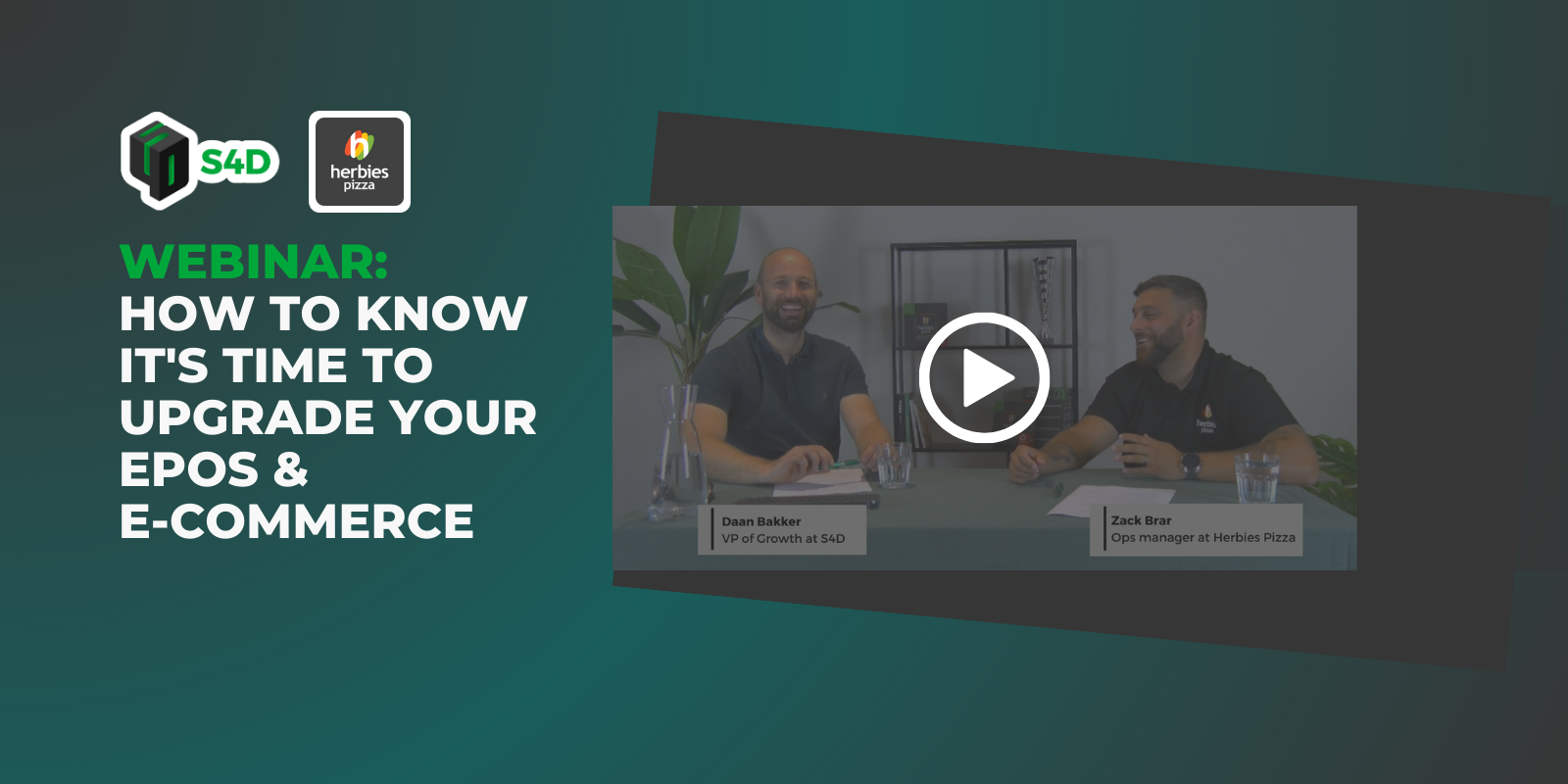
How to Know It’s Time to Upgrade Your ePOS & E-commerce
Zack Brar, Operations Manager at Herbies Pizza, and Daan Bakker, VP of Growth at S4D shared the journey of transitioning to a new ePOS and eCommerce solution. Learn how Zack identified the right time for change, managed the transition effectively, and the key lessons he learned along the way.

Signs It’s Time to Upgrade Your Restaurant Tech System (and How to Do It Right)
1. Declining User Experience
Your customers or franchisees are consistently frustrated with your platform. For example, if your website looks outdated, loads slowly, or lacks mobile responsiveness, customers will turn to delivery platforms like Just Eat, Uber Eats, or Deliveroo, or your competitors.
Prioritize a unified platform that integrates both your website and mobile app seamlessly. Invest in a solution that is tailored to your specific product. Unlike third-party platforms that offer everything from burgers to groceries, your tech should focus on optimizing your product experience—whether that’s pizzas, specialized dishes, or anything else.
We wanted simple solutions like an app. A lot of companies offer apps, which just adds another thing to manage. We were aiming to have everything in one place to make management easier and give our franchisees more flexibility in how they run their stores.

Zack Brar
Operations Manager at Herbies Pizza
2. Scattered and inaccessible data
You are pulling data from multiple sources, and it takes far too long to compile meaningful reports. For instance, managing sales, promotions, and operational performance requires logging into several platforms or using methods like TeamViewer to access the data from the on-premise solution in the store, these can turn simple tasks into hour-long projects.
Consolidate your data streams into an all-in-one platform. Implement a unified EPOS system that integrates with your website, app, and backend operations. By centralizing everything, you’ll gain real-time insights across all locations, improving decision-making and franchisee relations. Tools like PowerBI can help you monitor trends, sales, and operational metrics seamlessly.
3. Outdated technology and lack of innovation
Your restaurant chain is still relying on a system that hasn’t been innovating. Franchisees or staff may feel like the tech doesn’t support their needs, and you might feel embarrassed about showing off your digital presence to potential new franchisees.
Modernize with a system that not only meets current standards but also prepares you for future innovations. Select a partner that offers long-term scalability while keeping franchisee adoption in mind. To reduce resistance, consider implementing a system that has similar elements, making the transition smoother and less daunting.
4. Juggling multiple software systems
You and your franchisees need to juggle several platforms, from website, app, EPOS, KDS, Driver Management, and data systems, each with its own login and way of operating. This results in a task that should take 2 minutes, taking hours to handle.
Choose an all-in-one platform that supports all systems under one roof. This empowers the headquarters to have an overview of all data to make strategic decisions. Moreover, franchisees can monitor delivery time, out-of-door time, sales data, and other performance metrics through a user-friendly dashboard or app.
We had systems all over the place—an EPOS here, a website hosted elsewhere, and a backend. Accessing data was far too complicated. So, with S4D we brought everything into one platform, making data easily accessible for the head office and for franchisees.

Zack Brar
Operations Manager at Herbies Pizza
5. High commissions on delivery platforms
You’re paying high commissions to third-party platforms like Just Eat or Uber Eats, and your customers prefer their user experience over your own in-house system.
Build a competitive in-house digital experience that competes with these delivery platforms in user-friendliness but without the commission fees. Creating an intuitive app and website that offers exclusive deals, faster checkout processes, and a personalized experience will drive customers to your platform, reducing dependency on third-party platforms. Additionally, integrate upsells during the customer journey to boost order value and continuously improve through A/B testing to refine the experience and maximize revenue.
Conclusion: Take Action Early
Deciding to switch systems can feel daunting, but the benefits are often transformative.
When your technology starts holding you back, it’s not just about fixing the issue—it’s about setting you up for future growth.
If you want to hear firsthand how Zack successfully navigated this transition in his franchise, re-watch our webinar.